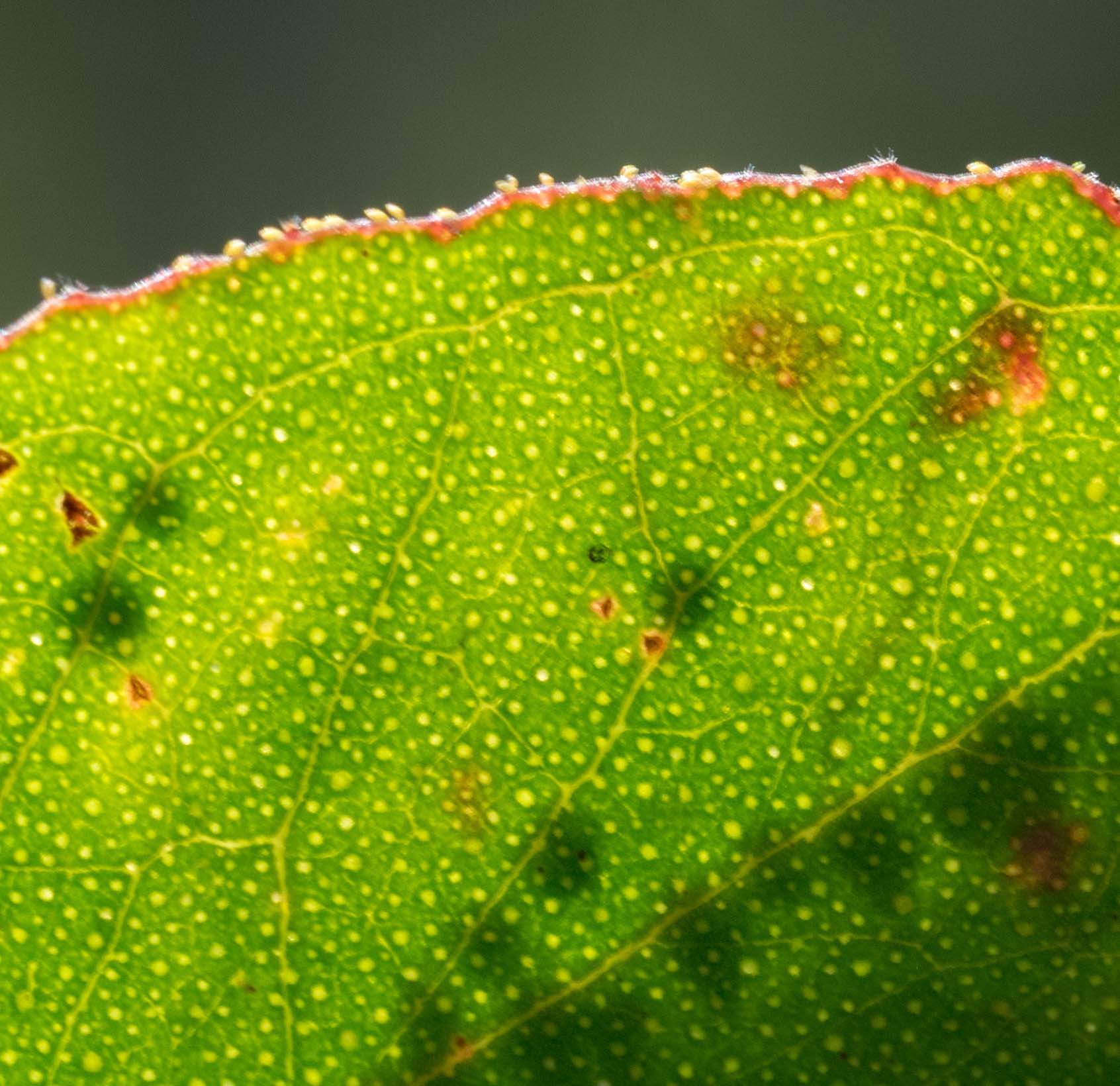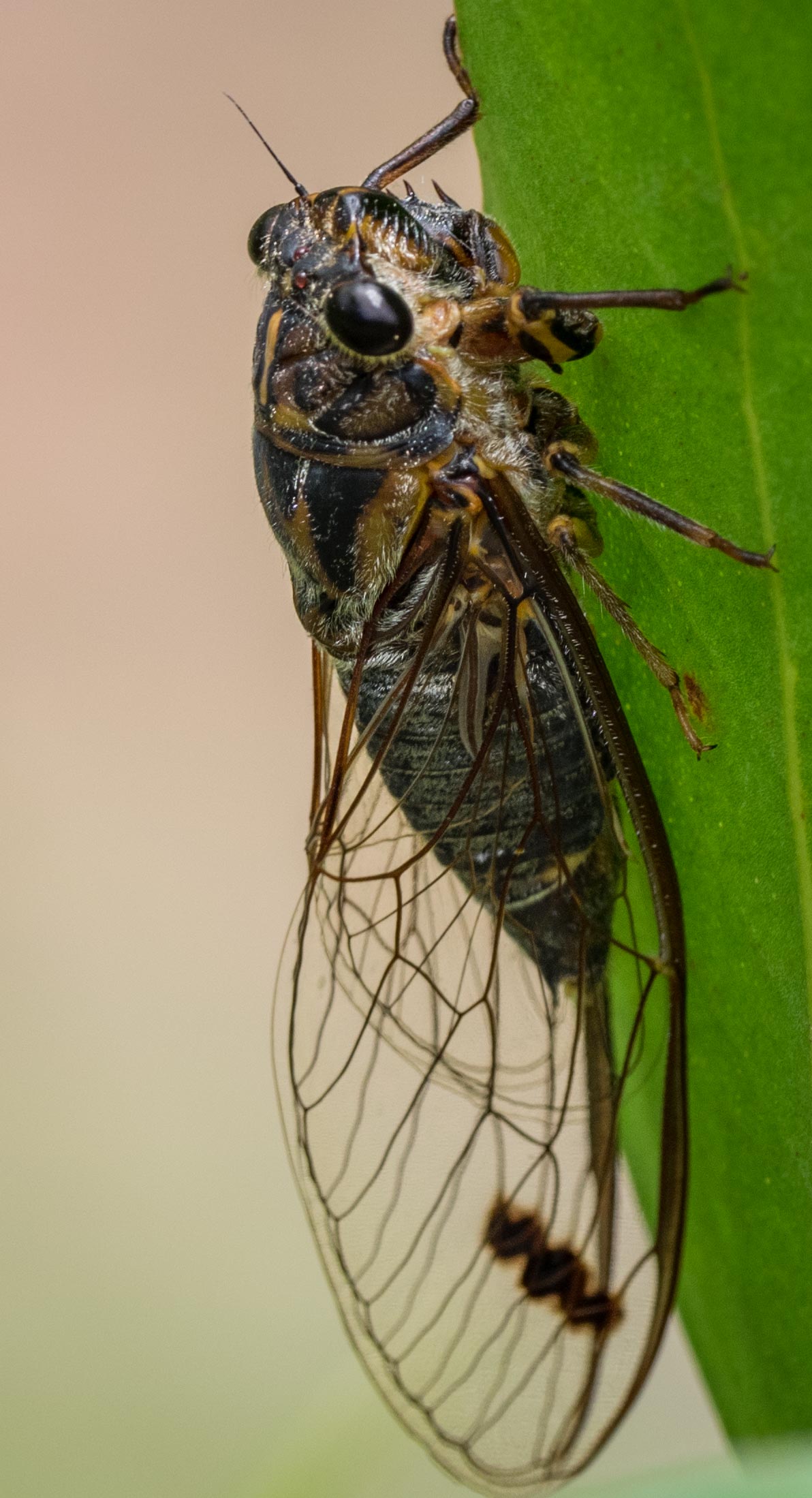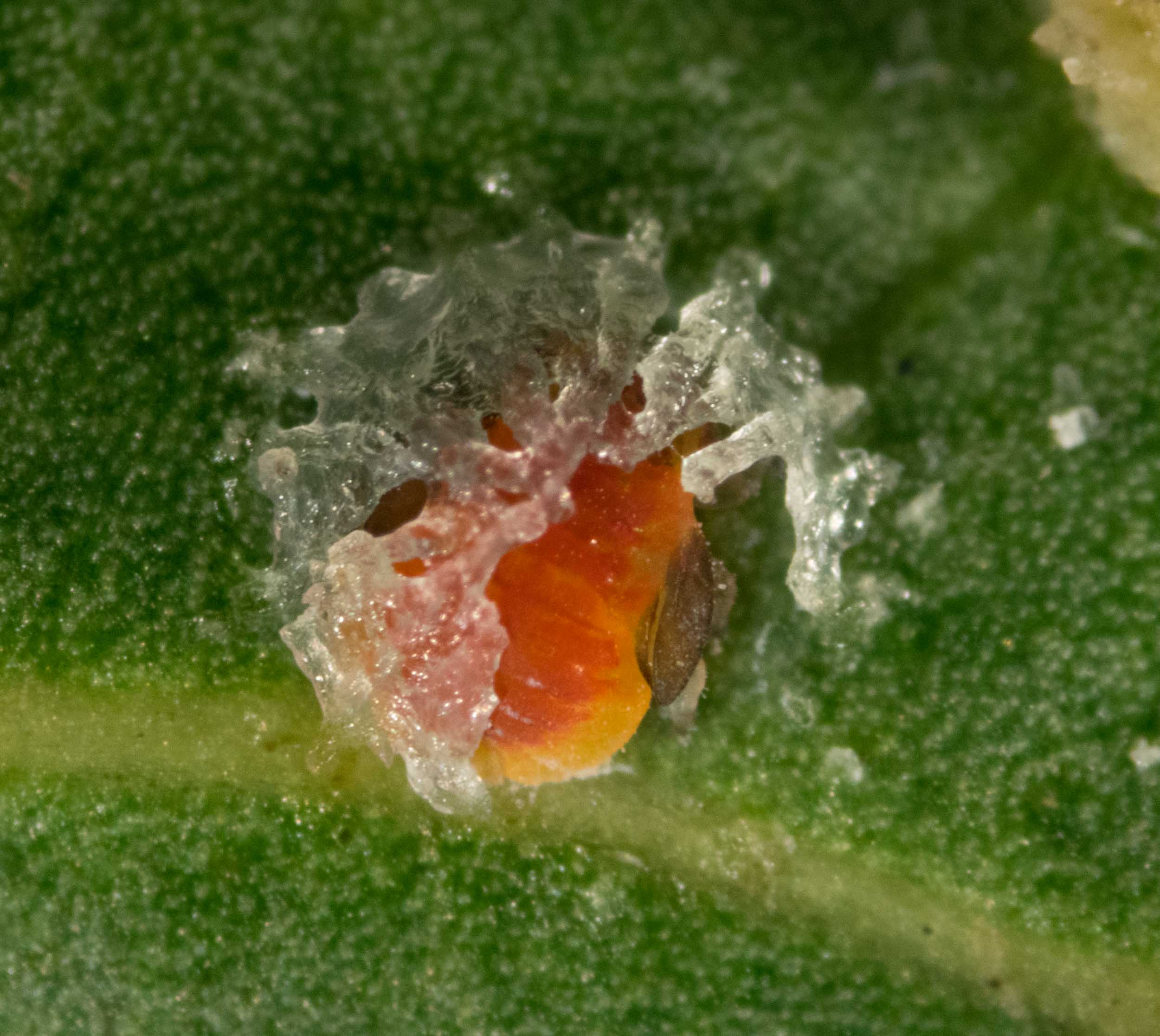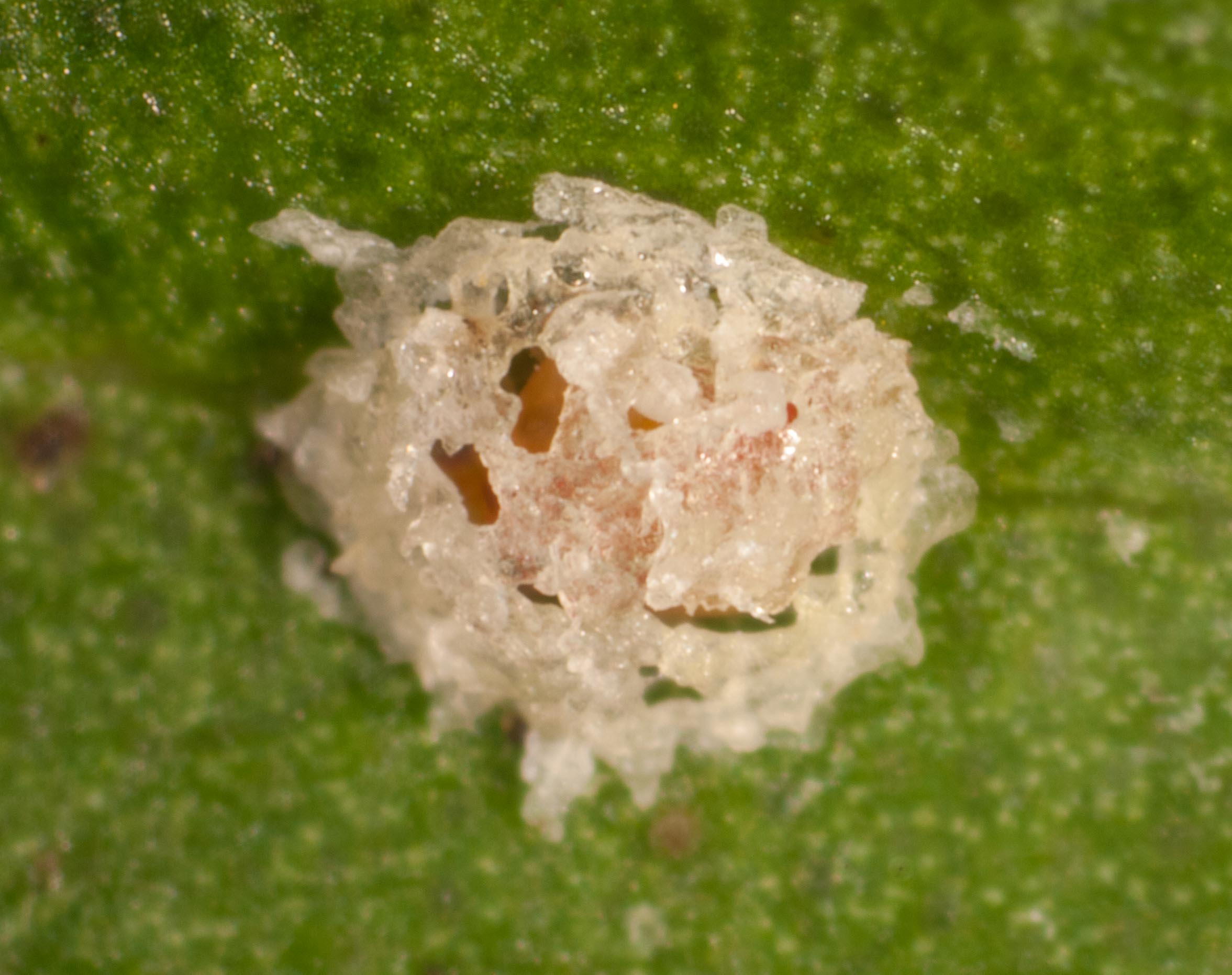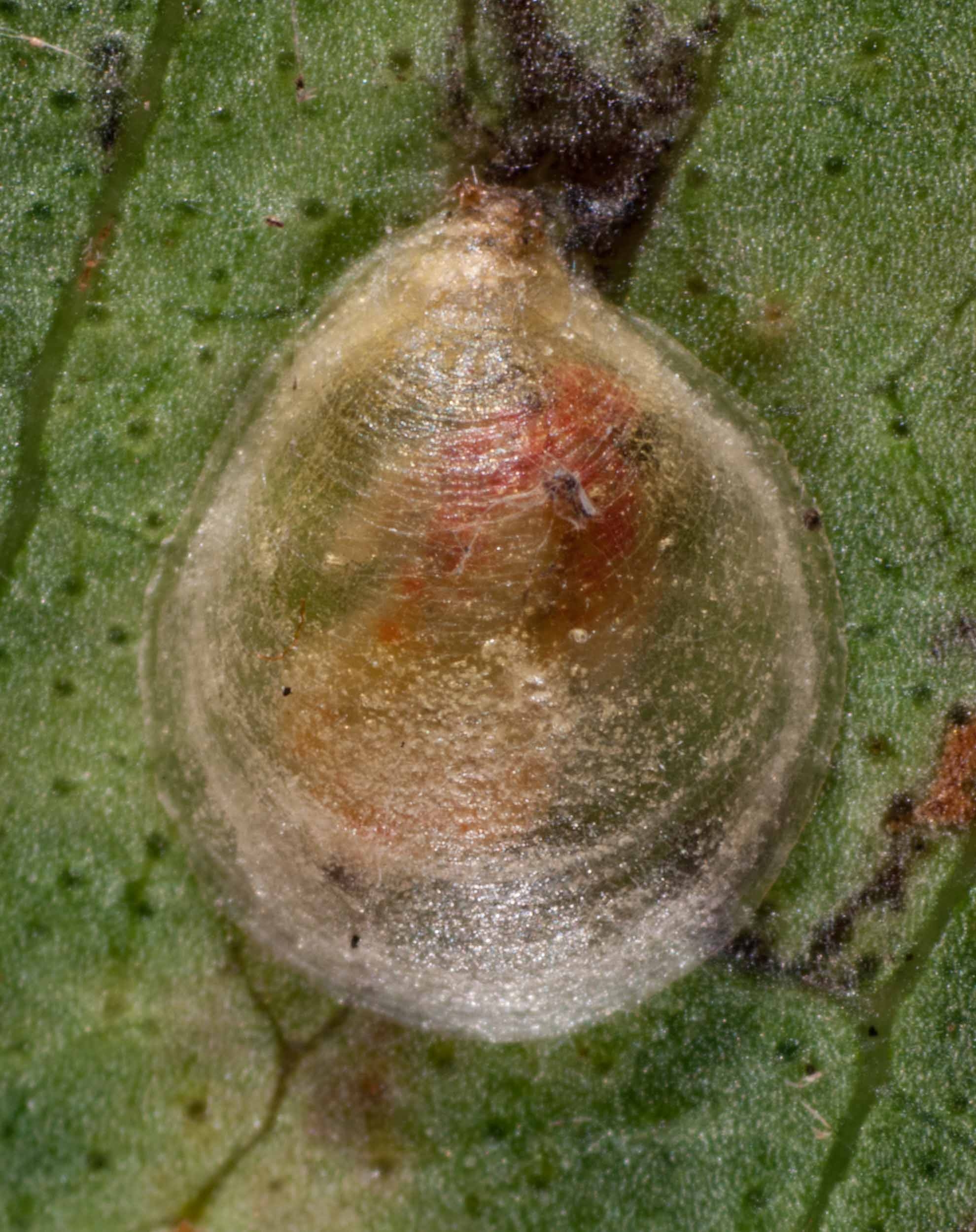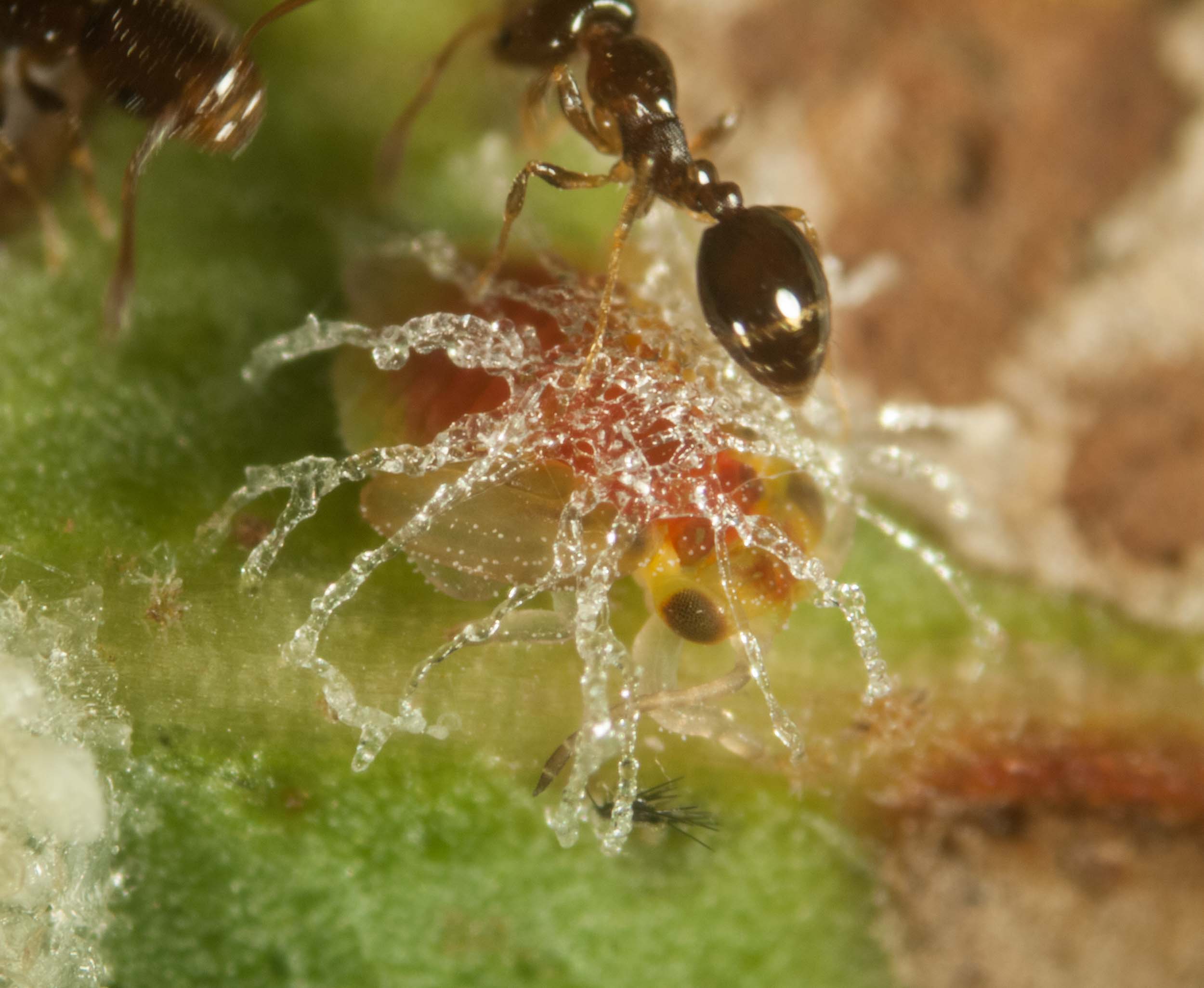Life on a Leaf
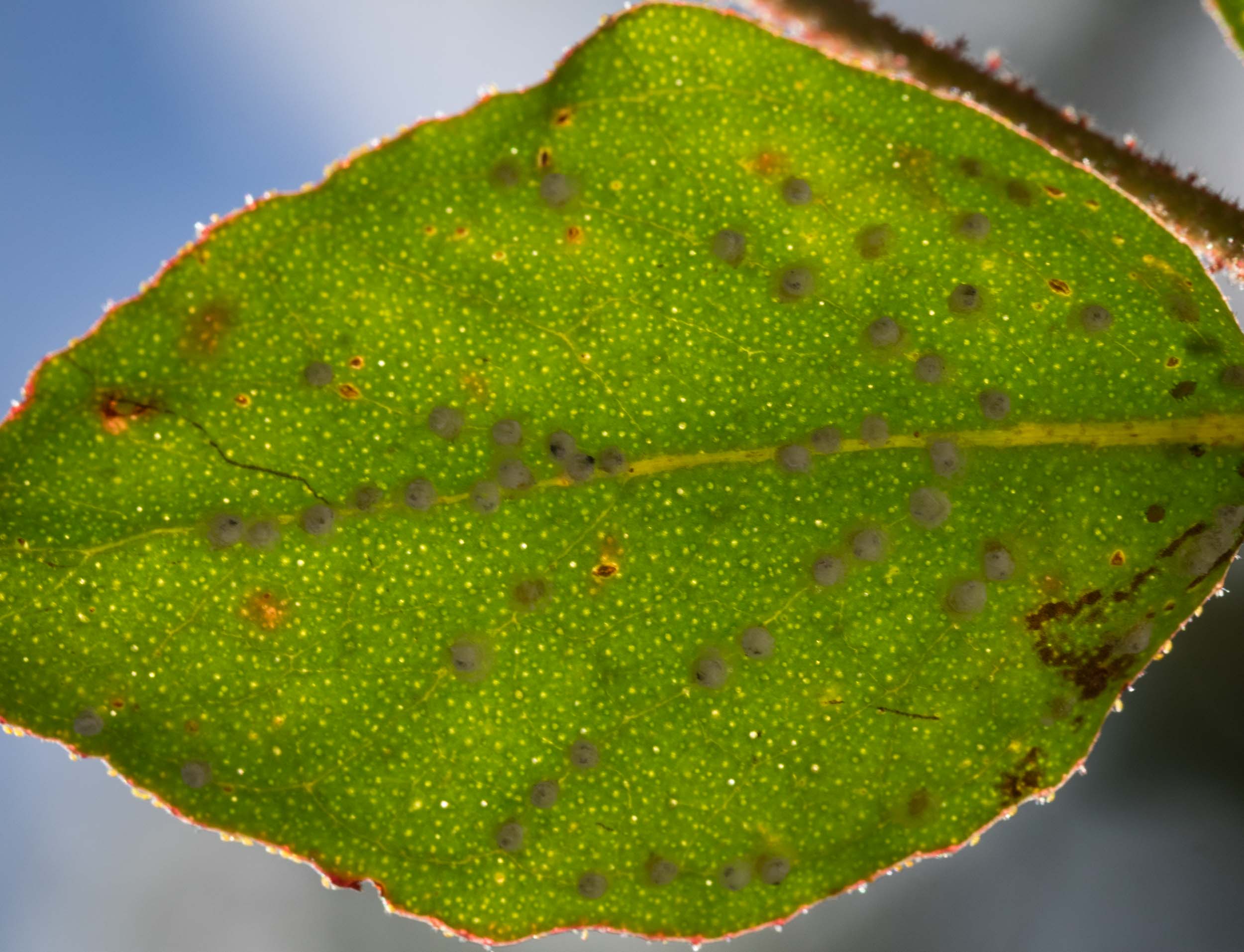
Energy for life in our forest - indeed for all life everywhere - comes from the sun. That energy is trapped in sugar molecules in the process of photosynthesis - carried out in the leaves of green plants. But how does that energy move into the forest food chain? Looking at some small creatures that live on the leaves of our tall eucalypt trees led me to a partial answer to that question.
Leaves as food
One way that energy can move from eucalypt leaves to other organisms is shown in the photos below.
Many insects, such as these caterpillars eat eucalypt leaves. They digest cellulose and other molecules in those leaves and build their bodies from the sugars released. In turn, these caterpillars, or the moths they develop into, become food for insects, birds and other animals in the forest.
Leaf veins offer sugar directly
But there is a more direct way to tap into the products of photosynthesis.
Eucalypts, like all plants, have a circulatory system to transport the sugars made in the leaves throughout the tree. You can see part of this system if you hold up a gum leaf to the light.
The network of veins shown in this image is made up of two types of vessels. Xylem carries water and minerals to leaf cells while phloem carries sugars away from the site of production in those cells. The white dots are the stomata, which provide openings for gas exchange between cells and the air. Carbon dioxide taken in from the air is converted to sugar in the leaf cells and oxygen, produced as a byproduct of photosynthesis, is released back into the air.
Bugs - little suckers
Some insects have found a way to tap directly into phloem to extract sugar and other nutrients in the sap. The best exponents of this trick are the Hemiptera - the Bugs (correct technical term if restricted to this insect Order!). Here is a Gallery of Bugs.
What makes bugs so good at piercing phloem vessels and sucking out the contents is shown in this image of the Milk Vine Bug, Oncopeltus sordidus. The arrow points to the stylet, a highly modified mouthpart suited admirably for this purpose - it's essentially a hypodermic needle and syringe package. You can see a drop of plant fluid at the end of the stylet, which the bug has extracted from the leaf it is standing on.
Psyllids - key players in energy transfer in the forest
While many different bugs feed on plant sap, one family, the Psyllidae, plays a dominant role in the forest ecosystem. Psyllids are small insects, but there are lots of them. One study showed that they are the most abundant insects on eucalypt leaves.
Adult psyllids are tiny (around 3mm long) winged insects. Here are two species I have found in our forest.
I haven't identified this guy yet, but I am confident it belongs to the subfamily Spondyliaspidinae. The shell from its last moult is still attached to its rear end. Update 19/2/18 This is Phellopsylla sp. Its nymphs actually live on the stems of Eucalyptus globoidea, not on the leaves.
This is definitely a Glycaspsis species - probably Glycaspsis seriata. We have found it mainly if not exclusively on leaves of Eucalyptus globoidea.
While adult psyllids do take sap from phloem vessels in leaves, most of that work is done by their nymphs.
Each female lays hundreds of eggs on or near the edges of a leaf - in this case from the White-stringybark Eucalyptus globoidea
The tiny nymphs (0.5 mm long) that hatch out of these eggs move to a phloem vessel, insert their stylet and extract the nutrients.
As a result the young nymphs tend to line up in rows, following the leaf veins.
Lerps - "crystal palaces"
You'll notice in the image above that the nymphs are not clearly visible. They are covered by a protective cap, called a lerp. The ability to make a lerp is a very clever trick that psyllids have evolved.
The sap that the nymphs extract from the phloem vessels contains a surfeit of sugar relative to other nutrients needed by the psyllids. The nymphs divert the excess sugar as it passes through their gut and excrete it as droplets of a starch solution, called honeydew.
To make its lerp, a psyllid deposits droplets of honeydew around its body. These immediately crystallise to form the solid white structure of the lerp. The images below show various stages in the construction of a lerp by a late stage Glycaspis seriata nymph.
Psyllid nymphs pass through four moults before they eclose as a winged adult. Everytime a nymph moults it must make a new lerp to house its growing body.
This video shows a Glycaspsis nymph depositing droplets of honeydew to the top frame of its lerp lattice. Note how it raises the end of its abdomen to reach the growing roof of the lerp - ingenious!
The finished lerp of Glycaspsis seriata takes the form of a glistening cone. W. Wooster, writing in the Microscopical Society of Victoria in 1880, described it as a "crystal palace".
Different psyllid species construct lerps of different shapes. For example, Hyalinaspis pallinidinota makes a lerp shaped like a mussel shell.
Lerps serve to prevent the psyllid nymph from drying out as well as protect it from insect predators. Psyllids have evolved mutualistic relationships with ants. The latter are often seen in association with lerps, taking drops of honeydew from the psyllid nymphs and in return warding off potential predators.
Psyllid Parasites
The lerp does not, however provide an iron-clad defence against predators. I discovered one example when investigating Hyalinaspis lerps. The nymphs inside many of these lerps were no more than a dried husk. Cutting open the nymph carcass revealed the cause - a wasp chrysalis or the remains thereof resided within.
A female wasp had at some stage injected the psyllid nymph with an egg. The wasp larva that hatched from this egg was nourished by the tissues of the unfortunate host psyllid and eventually developed to the pupal stage. The adult wasp eclosing from its pupal case escaped from the psyllid carcass and its overlying lerp, if present, by chewing its way out. Many Hyalinaspsis lerps showed these escape holes.
On one occasion I saved the wasp the job of making an exit route from its host. As I cut open the dried husk of a psyllid nymph, a tiny wasp wriggled free.
Update 19/2/18. I've been able to identify this wasp as Psyllaephagus sp. (Latin for "eats psyllid"!) It has been introduced to California to control outbreaks of psyllids on Eucalyptus plantations there. A little Aussie battler!
Psyllids and Birds
The lerp provides little protection against a hungry bird, which gets two types of nutrients from its little meal - carbohydrates from the lerp and protein from the psyllid nymph. One species, the Bell Miner, has learnt how to remove the lerp without damaging the psyllid beneath. It can come back to take another lerp from the same psyllid when it has rebuilt its home. Bell Miners therefore become lerp "farmers". The psyllids are kept busy remaking their lerps, but they are protected from other birds by the territorial miners. The resulting booming population of psyllids taking sap from the leaves of trees in the miners' territory will eventually compromise their health.
Tim Low has written an excellent essay "Exuding Abundance" on the importance of psyllids as a food source for Australian birds. He notes that many avian species take psyllids and lerps - in particular thornbills, weebills, whistlers, pardalotes and various honeyeaters. The bill shape of these birds enables them to readily prise off the lerp, to get access to the psyllid. Given their abundance, psyllids are likely to make a major contribution to the supply of energy in many ecosystems - via that avian route.




